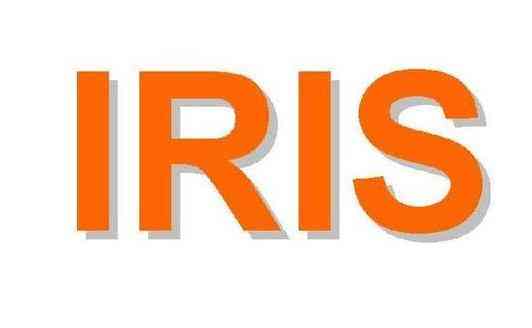|
International
Standard
ISO 55012
First edition
Asset management — Guidance
2024-07
on people involvement and
competence
Gestion d'actifs — Document d’orientation sur l'implication et les
compétences des personnes
Reference number
© ISO 2024
All rights reserved. Unless otherwise specified, or required in the context of its implementation, no part of this publication may
be reproduced or utilized otherwise in any form or by any means, electronic or mechanical, including photocopying, or posting on
the internet or an intranet, without prior written permission. Permission can be requested from either ISO at the address below
or ISO’s member body in the country of the requester.
ISO copyright office
CP 401 • Ch. de Blandonnet 8
CH-1214 Vernier, Geneva
Phone: +41 22 749 01 11
Email: [email protected]
Website: www.iso.org
Published in Switzerland
ii
Contents Page
Foreword .iv
Introduction .v
1 Scope . 1
2 Normative references . 1
3 Terms and definitions . 1
4 Context of the organization . 2
4.1 Considerations .2
4.2 Actions recommended .3
4.3 Potential benefits .3
5 Leadership . 3
5.1 Considerations .3
5.2 Attributes of effective leadership .4
5.2.1 General .4
5.2.2 Vision .4
5.2.3 Commitment .4
5.2.4 Integrity .4
5.2.5 Communicative .4
5.2.6 Domain knowledge .4
5.2.7 Team building . .5
5.2.8 Decision-making .5
5.2.9 Openness .5
5.3 Potential benefits .5
6 Strategy and planning . 5
6.1 Considerations .5
6.2 Actions recommended .6
6.3 Potential benefits .6
6.3.1 General .6
6.3.2 Learning .6
6.3.3 Decision-making .6
6.3.4 Credibility and trust .6
6.3.5 Risk management .7
7 Awareness and communication . 7
7.1 Considerations .7
7.2 Awareness and method for communication.7
7.3 Potential benefits .7
8 Competence . 8
8.1 Considerations .8
8.2 Knowledge and skill .8
8.3 Establishing competence requirements .9
8.4 Competence management and development .9
8.5 Potential benefits .10
Annex A (informative) Aspects of people involvement within an asset management system .11
Bibliography .12
iii
Foreword
ISO (the International Organization for Standardization) is a worldwide federation of national standards
bodies (ISO member bodies). The work of preparing International Standards is normally carried out through
ISO technical committees. Each member body interested in a subject for which a technical committee
has been established has the right to be represented on that committee. International organizations,
governmental and non-governmental, in liaison with ISO, also take part in the work. ISO collaborates closely
with the International Electrotechnical Commission (IEC) on all matters of electrotechnical standardization.
The procedures used to develop this document and those intended for its further maintenance are described
in the ISO/IEC Directives, Part 1. In particular, the different approval criteria needed for the different types
of ISO document should be noted. This document was drafted in accordance with the editorial rules of the
ISO/IEC Directives, Part 2 (see www.iso.org/directives).
ISO draws attention to the possibility that the implementation of this document may involve the use of (a)
patent(s). ISO takes no position concerning the evidence, validity or applicability of any claimed patent
rights in respect thereof. As of the date of publication of this document, ISO had not received notice of (a)
patent(s) which may be required to implement this document. However, implementers are cautioned that
this may not represent the latest information, which may be obtained from the patent database available at
www.iso.org/patents. ISO shall not be held responsible for identifying any or all such patent rights.
Any trade name used in this document is information given for the convenience of users and does not
constitute an endorsement.
For an explanation of the voluntary nature of standards, the meaning of ISO specific terms and expressions
related to conformity assessment, as well as information about ISO’s adherence to the World Trade
Organization (WTO) principles in the Technical Barriers to Trade (TBT), see www.iso.org/iso/foreword.html.
This document was prepared by Technical Committee ISO/TC 251, Asset management.
Any feedback or questions on this document should be directed to the user’s national standards body. A
complete listing of these bodies can be found at www.iso.org/members.html.
iv
Introduction
0.1 General
The performance of an asset management system and its processes depend on the active involvement
of competent people in the organization and their ongoing support and commitment to its operation
and continual improvement. In addition, the identification, development and evaluation of the effective
involvement of people (including outsourced resources) are critical for an organization’s asset management
system to achieve outcomes which are consistent and aligned with its strategies and values.
Overall, the involvement of people within an asset management system is enabled by activities and practices
associated with leadership, planning, awareness, communication and competence.
0.2 Relationship to asset management system
The guidance given in this document is based on the requirements for an asset management system described
in ISO 55001 and more generalized principles presented in ISO 55000. According to ISO 55001:2024, 4.1:
“The organization shall determine external and internal issues that are relevant to its purpose and that
affect its ability to achieve the intended result(s) of its asset management system.”
As people are a key component of an asset management system, the correlation between this document
and ISO 55001 can facilitate the involvement of people and the development and management of their
competence within the asset management system.
Within an asset management context, the need for the commitment of top management to support the
asset management system is repeatedly and clearly outlined in ISO 55001. In particular, ISO 55001:2024,
Clause 5, identifies requirements for specific actions by top management to demonstrate leadership for
conformity to ISO 55001. For example, ISO 55001:2024, 5.1, highlights the responsibility of top management
to demonstrate leadership and commitment with respect to the asset management system by:
a) ensuring the establishment, use and alignment of asset management decision-making criteria with the
organization’s objectives;
b) ensuring that the asset management policy, asset management system scope, strategic asset management
plan (SAMP) and asset management objectives are established and are aligned and compatible with the
strategic dir
...














